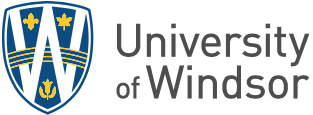 MSc candidate Dennis Otieno contributes to water quality monitoring in the Detroit River.
MSc candidate Dennis Otieno contributes to water quality monitoring in the Detroit River.
Dennis Otieno, an MSc candidate from the Lake Victoria basin in Kenya, is gaining hands-on experience with the Laurentian Great Lakes by contributing to water quality monitoring in the Detroit River, a connecting channel of the Great Lakes.
The project is part of the Environment and Climate Change Canada (ECCC) connecting channels monitoring program. Sampling sites along the connecting channels of the Great Lakes have been established and are continually monitored to evaluate the year-round distribution of nutrients and suspended sediments transported between lakes.
Otieno, who is co-advised by GLIER researchers Drs. Ken Drouillard and Mike McKay, coordinates the sampling and sample processing for two of the ECCC autosamplers located at GLIER. One is located on the dock behind GLIER, while the other is inside GLIER, sampling water from an existing intake.
These two monitoring sites join established monitoring sites on the St. Clair River, Niagara River and St. Lawrence River. They are the first sampling sites established since 1987.
Evaluating nutrient loading and eutrophication in the Great Lakes Basin is part of ECCC’s commitment to the Great Lakes Water Quality Agreement (GLWQA).
The establishment of long-term sampling locations on the Detroit River to monitor nutrients, major ions and other water quality measurements will advance this commitment and address potential concerns exacerbated by a rapidly changing climate.
